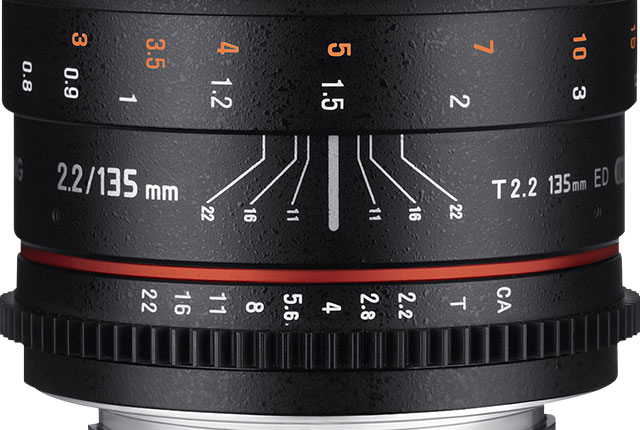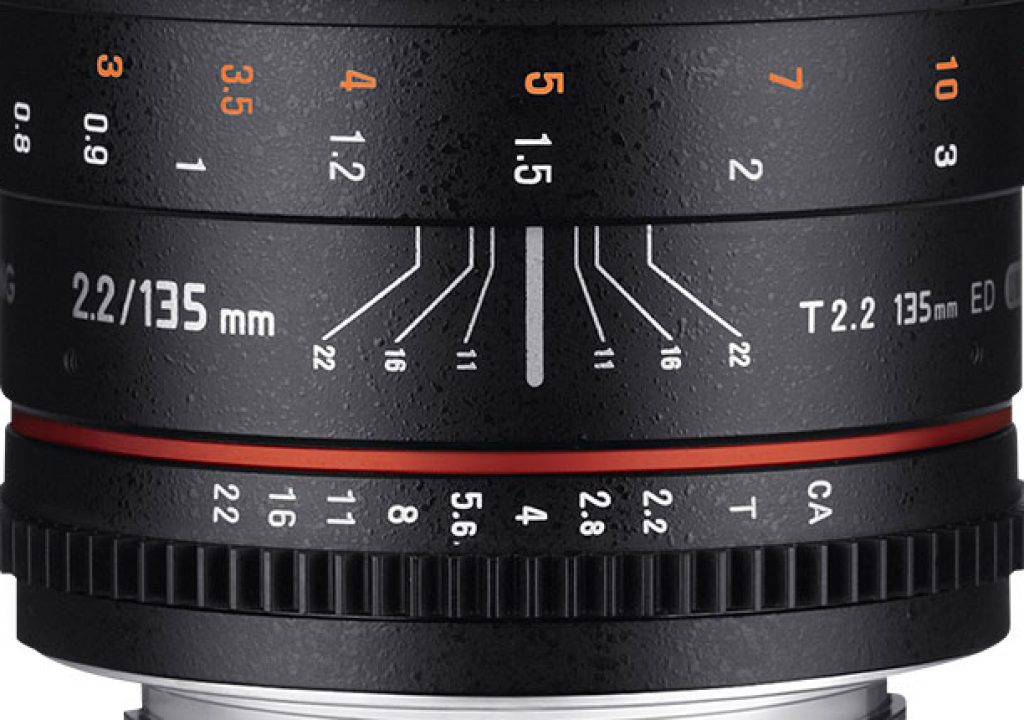
The new Samyang 135mm T2.2 ED UMC VDSLR Cine Lens (also known in some markets as Rokinon) may not be the lens for everybody, but the truth is that Samyang tried hard to make it interesting for video. Besides launching it for multiple mounts or bayonets, the company has built the lens so it offers integrated gearing for video rigs with follow focus systems.
The new lens, which is the Cine version of the Samyang 135mm f2.0 ED UM, is available for Canon, Nikon, Sony E and MFT mounts. According to Samyang, the full range of mounts will include Canon EF, Nikon F (AE), Sony A, Sony E mount, Pentax K, Fujifilm X, Canon M, Samsung NX, Four Thirds and Micro Four Thirds (MFT).
This cine/video lens is full frame compatible, suitable for cameras and interchangeable lens camcorders fitted with 24x36mm (full frame) or smaller sensor. The Samyang 135mm, built of high-strength aluminum alloy, features a floating type design, with one Extra-low dispersion lens element (ED) for maximum optical performance. A circular aperture of T2.2 with 9 blades offers great bokeh for close head and shoulder portrait work, and short telephoto. To ensure high contrast and faithful colour reproduction, all lens elements have been covered with Samyang’s multi-layered UMC anti-reflective coatings. The design and lens coatings offer, according to Samyang, impressively low chromatic aberrations, ghosting and flare.
The Samyang VDSLR versions are rated in T-Stops rather than F-stops which is usual for movie camera lenses. F-stop number expresses the speed of the lens on the assumption that the optics transmit 100% of the incident light. The T-number expresses the actual light transmission, which is more accurate, and is the standard in professional cine lenses. Soft and quite serrated aperture ring and focus ring are optimized for video shooting .You may change the aperture quietly and smoothly with the uncoupled aperture gear rings. Also, distance scale and T numbers are marked on both sides of the lens for convenience. The lens is supplied with removable petal-shaped lens hood, and front and rear lens caps.

